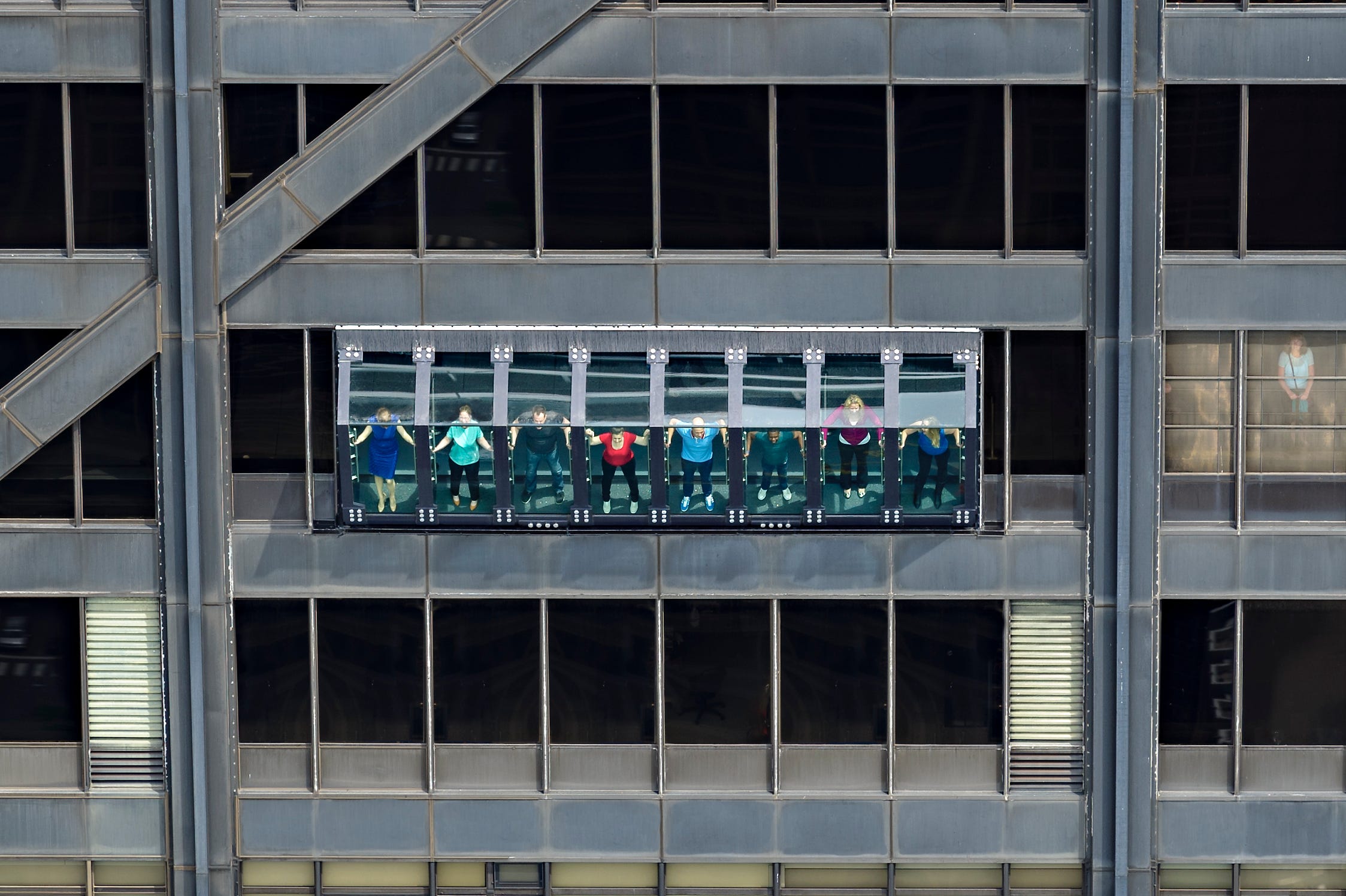

Rotational joints are located at three points along the base of the L-frame and are comprised of PTFE spherical bearings with custom machined AISI 4140 quenched and tempered hollow sleeve bolts, each containing an internal ASTM A320 L7 high-strength bolt for redundancy. A 30-degree angle was determined to be a point where the majority of patrons would have their center of gravity outside the exterior face of the tower while maintaining a reasonable clear height for patron modules, as this height is controlled by rotational clearance of the L-frame and the existing structure of the building. The geometry of this frame fits in one complete bay of the Hancock Tower and can rotate 30 degrees outward from the face of the tower’s exterior. The 3-D steel frame structure of the Tilt is 27 feet wide and 7 feet tall and can hold eight patrons at a time, one in each module. The Tilt system is a mechanized steel and glass structure that is comprised of three main components:

The final and very important challenge of maintaining the integrity of the world-famous architecture was also addressed by designing the Tilt structure’s geometry to mimic the existing exterior wall expression. This mockup was utilized by surveying the experiences of both a random sampling of TT and M56 staff to evaluate the comfort of the geometry, vertical hand railing, tilt angle, tilt speed, and tilt motion profiles. For this challenge, TT fabricated a full-scale mockup of a single bay of the Tilt. Ergonomics and patron experience required evaluation to test the concepts of thrill and comfort. The powered actuation system was also a direct part of the structure’s load path, so full-scale static load proof testing was done on the actuators to ensure their published load carrying capabilities. Integrated into the steel frame were structural glass components. A steel frame provides excellent fatigue resistance and element ductility, as well as a clear load path. A steel-framed operable wall skeleton was developed to provide a robust and durable system that would be capable of operation 7 days a week.

Designing and constructing a fixed-tilted exterior curtain wall is no easy task, so taking that concept to the next level and developing an operable exterior wall with the ability to safely hold observatory patrons was a complex challenge.


 0 kommentar(er)
0 kommentar(er)
